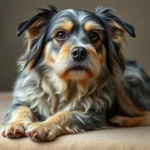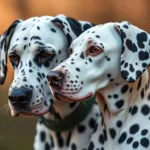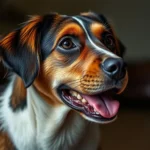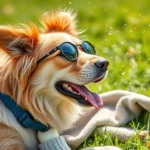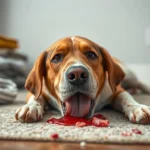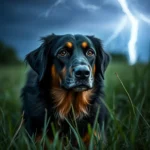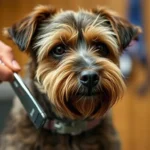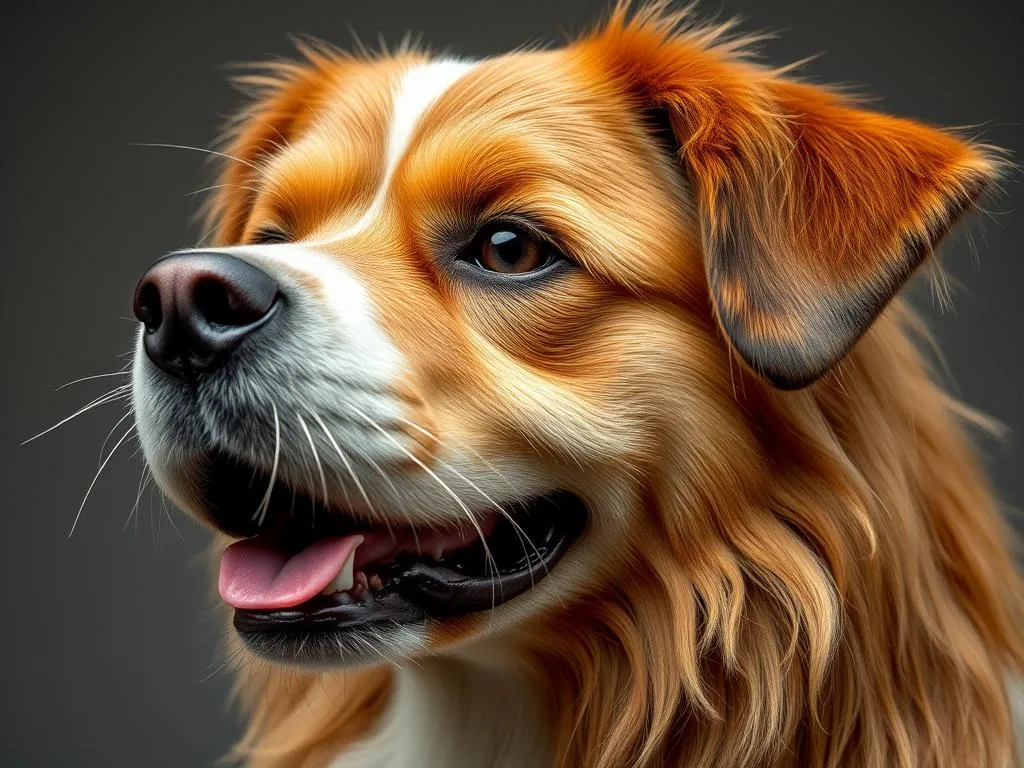
Grooming plays a crucial role in the health and well-being of our furry friends. Regular grooming not only helps maintain a clean and tidy appearance but also promotes skin health and provides an opportunity to monitor for any potential issues. Understanding your dog’s coat type is essential for selecting the right brushes and grooming tools, which can significantly impact the effectiveness of your grooming routine.
Understanding Dog Coat Types
Overview of Dog Coat Types
Dogs come in various shapes, sizes, and coat types, each requiring different grooming techniques and tools. Identifying your dog’s coat type is the first step toward effective grooming. Here’s a breakdown of the most common coat types you might encounter:
- Short-haired: Lies close to the body, requires minimal grooming.
- Medium-haired: Has a combination of short and long hairs, may require more frequent grooming.
- Long-haired: Requires regular brushing to prevent tangles and mats.
- Curly: Has tight curls, needs specialized care to maintain their texture.
- Wiry: Features a rough, bristly texture that requires specific grooming tools.
Characteristics of Each Coat Type
Short-haired Coats
Short-haired dogs, such as Beagles and Boxers, have coats that are smooth and lie flat against their bodies. These coats are generally easy to maintain, requiring less frequent grooming, usually just a weekly brush to remove loose hair and dirt.
Medium-haired Coats
Medium-haired dogs, like Cocker Spaniels and Border Collies, have a bit more texture and volume. They tend to shed more than short-haired breeds and may require grooming every few days to prevent tangles and remove excess fur.
Long-haired Coats
Long-haired breeds, such as Afghan Hounds and Shih Tzus, have flowing coats that need regular brushing, often daily. This helps prevent mats and tangles, which can cause discomfort for your dog and lead to skin issues.
Curly Coats
Dogs with curly coats, such as Poodles and Bichon Frises, have a unique texture that requires specific grooming techniques. Their curls can trap dirt and debris, leading to skin problems if not maintained properly.
Wiry Coats
Wiry-coated dogs, like Wire Fox Terriers and Scottish Terriers, have a rough, bristly texture. Grooming these coats can involve a unique technique known as “hand-stripping” to maintain the coat’s integrity.
Importance of Grooming for Dog Health
Benefits of Regular Grooming
Grooming is not just about aesthetics; it plays a vital role in your dog’s health. Here are some key benefits of regular grooming:
- Prevention of Matting and Tangles: Regular brushing can prevent painful mats from forming, especially in long-haired and curly-coated breeds.
- Reduction of Shedding and Allergens: Grooming helps manage shedding, reducing allergens in your home for you and your family.
- Skin Health and Detection of Issues: Routine grooming allows you to check for skin infections, parasites, and other health concerns.
- Bonding Time: Grooming provides an opportunity for you and your dog to bond, enhancing your relationship.
How Coat Type Influences Grooming Frequency
The frequency of grooming will depend largely on your dog’s coat type. Here are some general recommendations:
- Short-haired dogs: Grooming once a week may suffice.
- Medium-haired dogs: Every few days is ideal to manage shedding.
- Long-haired dogs: Daily grooming is necessary to prevent tangles.
- Curly-coated dogs: Regular grooming, at least several times a week, is essential to maintain their coat.
- Wiry-coated dogs: Grooming every few weeks with specialized tools is often best.
Types of Dog Brushes
Overview of Grooming Tools
While brushes are a primary tool for grooming, there are other essential tools to consider, such as combs, clippers, and de-shedding tools. Choosing the right tool is crucial for effective grooming based on your dog’s coat type.
Specific Brushes for Each Coat Type
Brushes for Short-Haired Dogs
Short-haired dogs benefit from tools like:
- Bristle Brushes: These are great for smoothing the coat and distributing natural oils.
- Rubber Brushes: Ideal for removing loose hair and dirt, they also provide a massaging effect.
Recommended Brands: FURminator and Hertzko offer excellent options for short-haired breeds.
Grooming Techniques: Use gentle strokes in the direction of hair growth, and be sure to brush regularly to keep shedding under control.
Brushes for Medium-Haired Dogs
For medium-haired coats, consider:
- Slicker Brushes: Effective for removing tangles and loose fur.
- Undercoat Rakes: Helpful for managing the dense undercoat.
Recommended Brands: Safari and Pet Neat are popular choices for medium-haired dogs.
Grooming Techniques: Focus on sections of the coat, starting from the back and working your way forward. Use the slicker brush to remove tangles, followed by the rake for the undercoat.
Brushes for Long-Haired Dogs
Long-haired dogs need brushes like:
- Wide-toothed Combs: Essential for detangling.
- Pin Brushes: Great for fluffing the coat and removing dirt.
Recommended Brands: Hertzko and Chris Christensen make highly regarded brushes for long-haired breeds.
Grooming Techniques: Start at the tips and work your way up to avoid pulling at the roots. Be patient, as long-haired dogs may require more time to groom.
Brushes for Curly Coated Dogs
Curly-coated dogs require:
- Combs Specifically for Curls: These help maintain the curl structure without damaging the hair.
- Slicker Brushes: Effective for removing debris while keeping curls intact.
Recommended Brands: The Pet Portal and ZYMO offer great options for curly coats.
Grooming Techniques: Use a comb to gently detangle, followed by a slicker brush to remove any loose hairs, working in sections to avoid breakage.
Brushes for Wiry Coated Dogs
For wiry coats, the following tools work well:
- Bristle Brushes: Help maintain texture and remove loose hair.
- Stripping Knives: Necessary for hand-stripping to keep the wiry texture.
Recommended Brands: Andis and FURminator provide excellent products for wiry coats.
Grooming Techniques: Brush in the direction of hair growth and use the stripping knife carefully to remove dead hair while preserving the coat’s structure.
Tips for Effective Dog Grooming
Creating a Grooming Routine
Establishing a consistent grooming routine is essential for both you and your dog. Here are steps to create a positive grooming experience:
- Set a Schedule: Decide on specific days and times for grooming sessions.
- Make it a Positive Experience: Use treats and praise to reward your dog during grooming.
- Prepare Your Space: Choose a comfortable area where your dog feels safe.
Dog Grooming Techniques
Using the right techniques can make grooming more effective and comfortable for your dog:
- Brush in the Direction of Hair Growth: This minimizes discomfort and helps keep the coat healthy.
- Be Gentle: Avoid pulling or yanking on tangles, as this can cause pain.
- Take Breaks: If your dog appears restless or uncomfortable, take breaks to keep the experience positive.
Additional Grooming Care
Incorporating other grooming practices, such as bathing, nail trimming, and ear cleaning, is essential for overall health. Use high-quality products formulated for your dog’s specific coat type to enhance their grooming routine.
Common Grooming Mistakes to Avoid
Over-brushing and Under-brushing
Finding the right balance in grooming is crucial.
- Over-brushing: Signs can include skin irritation or hair breakage. Always monitor your dog’s comfort level during grooming.
- Under-brushing: This can lead to mats and tangles, particularly in long-haired and curly-coated breeds, which may result in discomfort and skin issues.
Using Incorrect Tools
Using the wrong brush can lead to ineffective grooming and potential harm to your dog’s coat. Here’s what to keep in mind:
- Risks of Incorrect Brushes: Using a slicker brush on a short-haired dog can cause irritation, while a bristle brush may not effectively remove loose fur from a thick-coated dog.
- Choosing the Right Tools: Always select brushes and tools based on your dog’s specific coat type to ensure optimal grooming results.
In conclusion, understanding the significance of choosing the right dog brushes based on coat type is fundamental to maintaining your dog’s health and comfort. Regular grooming not only helps keep your dog looking great but also plays a vital role in their overall well-being. Assess your dog’s coat type and invest in the appropriate grooming tools to ensure a happy, healthy pup!


